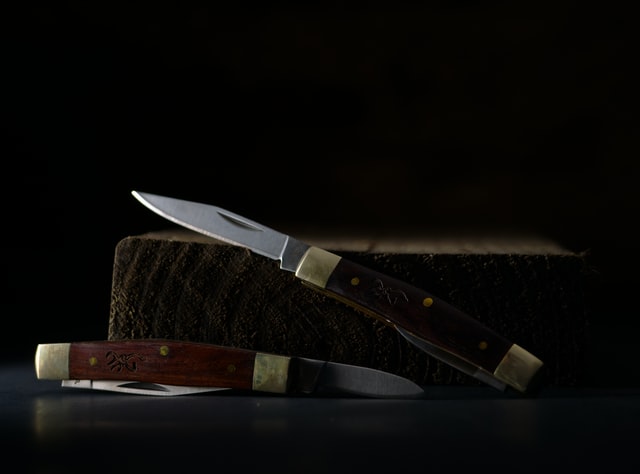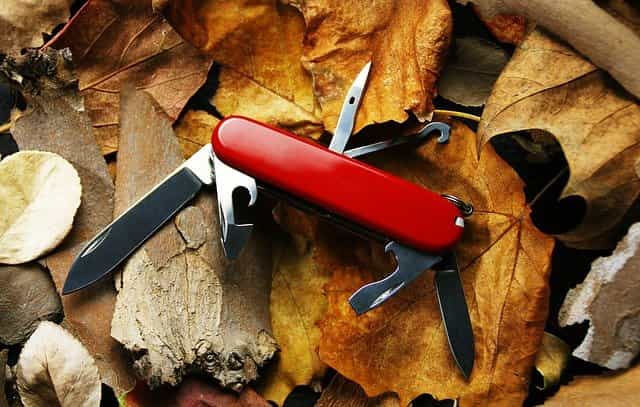There are specialty knives like the expensive Randall knives that I once talked about, and we have the everyday, mass-produced pocket knives that still find a way to keep to quality and taste. If any question has crossed your mind about knives, it has to be how these knives are produced so fast that they don’t suffer a loss in quality still.
In this piece, we approach the knife-making industry from an easy, layman angle so that you understand everything that goes into producing the different kinds of knives you might come across.
Table of Contents
Are Knives Made by Machines?
Technology has advanced up to the point where almost any kind of manufacturing can be automated. This allows some knife manufacturers to churn out more knives per hour than others can do in a day, even if the premium appeal attached to both knives might not be the same.

Knives can be made by machines that have been automated to complete the process from stamping to fitting the handles, polishing, and sharpening of the blade. Companies with these automated processes can afford to sell their knives lower since they make more of the thing and can make their profits in the overhead costs.
However, not all knives are made by machines. The earliest knives were made in forges where bladesmiths had to do the manual work of pounding the knife blade to perfection, checking the finish by hand, and working at the polish with extreme care and precision.
That is what the likes of Randall knives still do today, and that is why their knives come at such a high price with such waiting periods.
These hand-forged knives are believed to retain a certain level of quality and appeal that you cannot get from machine-made knives. To get a better understanding of how they compare, check the heading below.
Forged Knives Vs Stamped Knives
Forged knives will always be compared to stamped knives on several factors. Their names say it all about them, but let’s do a little digging to see what they mean:
Forged Knives
As the name implies, forged knives refer to bladed tools that were made in the traditional forge.
A forged knife requires that there be a bladesmith who knows what they are doing to start the knife-making process from cutting the steel to heat treating to the right temperature and finishing the knife blade to perfection.

Bladesmiths are more experienced than one another which can determine the price that they can put on their knives. The forge masters working on the Coolina knives, for example, are not at the level of those who work on the Randall knives.
I have included a video of a knife forging process that shows what happens from start to finish below:
While forging does not allow the mass production of knives as we are used to today, there are still some benefits to it.
Pros of forged knives
- Better attention to detail on the knife
- Blades feel more premium and sturdier in the hand
- Every blade comes with quality craftsmanship behind it
- Forged knives are very strong and retain their strength for years
- Manufacturers have the chance to add a bolster in
- Easier to sharpen on a whetstone
- Forged knives retain the traditional knife appeal
Cons of forged knives
- They are relatively more expensive due to the time it takes to make them
- Knives cannot be produced at scale most times
- Requires a knowledgeable bladesmith to do something of value
- Quality control might vary.
Stamped Knives – How Modern Knives Are Made
When we talk about mass-produced knives, stamped knives are almost what we are referring to here.
A sheet of the core stainless steel is fed into a machine which stamps out the knife blade pattern to be used based on a model that has been programmed into the machine. This process allows a knife-making company to use a single large sheet of stainless steel material to make multiple knives without having to cut, shape, and form the structure out with a forge.

The stamped stainless steel in blade form is then passed through a series of other processes that ensures the blade is sharpened, polished, and given a handle before it gets out into the market.
I found a video on how stamped knives are made which shows you exactly what the stainless steel sheet looks like and how the machine cuts the blade out:
As you would see from the video, stamping allows the knife makers to produce way more knives in a little time than forging would. The fact that the stamping is automated means that you only have to train someone to use the machine, not look for the best bladesmith around.
Even at that, stamped knives may have their shortcomings.
Pros of stamped knives
- They can be produced fast so you don’t have to wait too long
- They don’t cost as much as forged knives
- They are lightweight and flexible
- Good manufacturers have very sharp stamped knives too
Cons of stamped knives
- Everyone is doing it, especially Chinese brands churning out poor quality products
- It’s sometimes harder to tell if they are well-made compared to forged knives
- About any kind of steel can be used which can be bad for the end-users
- They are a little challenging to sharpen on a whetstone (compared to forged knives)
There You Have It
Now, you know how all knives are made and you have also found out how knives are mass-produced. There is a high chance that you never need a forged knife if you only work in the kitchen.
Again, this boils down to preferences at some points but I only see the need for these forged blades when outdoors. Their bolster, increased strength, and sturdiness does come in handy when you are doing some heavy lifting on the trail.
If there is anything else that you’d want to know that I didn’t cover here, make sure to reach out in the comments. I’ll get back to you ASAP.







